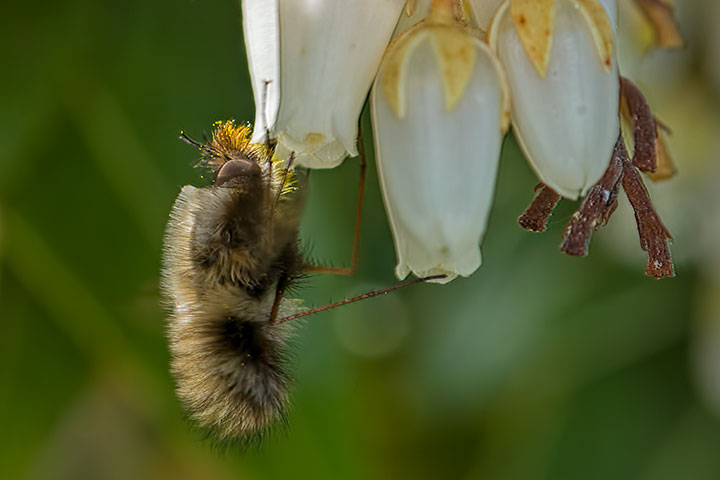Mid April prompts a number of annual events: ospreys return (saw another one today), taxes, and the proliferation of Bombylius major. For some years, this blog has devoted a posting to this fuzzy little bee-mimic fly—all in mid April. For that is the brief time they are with us. Only with last year’s posting did I discover why that is and wrote:
It only appears in the spring because that is the time solitary bees temporarily leave their nest sites unprotected. Unlike the social bees, each solitary bee lays her own eggs and does so in a small tunnel she has provisioned with food such as nectar and pollen. She then seals the entrance. However, for the short time it takes to do this, the tunnel entrance is open and that is when the Bombylius fly comes by and deposits its own eggs inside. The Bombylius larva emerges, feeds on the provisions meant for the bee larvae; it then changes form and eats the bee larva, itself. Bombylius has only a short time in the spring to give its offspring this opportunity.
So, I note that there were at least two different species of solitary bees roaming my lawn. Bombylius seems to have timed things right again.
That this Bombylius fly has also been foraging among the dandelions is evident by the yellow pollen on its face.
The Bombylius fly is hovering below the flower, but stabilizing itself with is forelegs.

Great story. Oddly, I haven’t knowingly seen this particular bee-mimic up this way (Clearwater), though others show themselves later in the year.
Good info and photos!